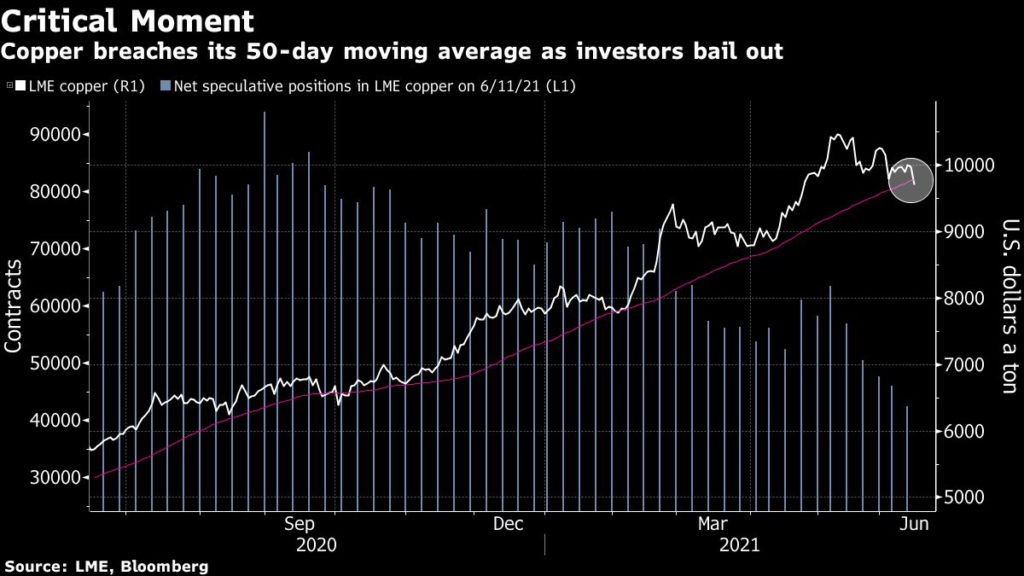
Copper prices dropped on Tuesday to their lowest since April 26, weighed down by investor fears over measures Chinese authorities could take to curb a recent price rally in commodities.
Copper for delivery in July fell by as much as 4.7% from Monday’s settlement price touching a low of $4.3155 per pound ($9,515 per tonne) Tuesday afternoon on the Comex market in New York. The bellwether metal is now trading down more than 10% since hitting an intra-day high of $4.88 per pound on May 10.
The weakness spilled over onto equity markets with Freeport-McMoran down 4.8% affording the Phoenix-based company a $57 billion valuation. Freeport is set to regain the crown as the world’s biggest listed copper producer this year as its Grasberg underground expansion ramps up. Southern Copper fell 4% for a market cap just shy of $50 billion, First Quantum Minerals gave up 6.2% at $15.5 billion and Ivanhoe Mines relinquished 7% of its value, falling to $8.7 billion in New York.
Click here for an interactive chart of copper prices
China’s state planner last week renewed its pledge to step up monitoring of commodity prices, as domestic producer inflation hit its highest in more than 12 years.

Market participants expect China to release state reserves of copper, aluminum, and zinc and crack down further on speculation in commodities.
Higher copper prices are the only way to spur output of the metal for electric vehicles, Trafigura Group CEO Jeremy Weir said Tuesday at the FT Commodities Summit.
“If you want to electrify, we are going to need more copper,” Weir said. “And higher prices are the only solution.”
The possibility that the US Federal Reserve will soon start to slow the pace of emergency asset purchases is also bolstering the outlook for the dollar, shaking a pillar of support for copper and other commodities that have been boosted by the currency’s weakness over the past year.
While supply issues and a demand uplift arising from the green-energy transition sustain the long-term outlook for copper, an investor exodus appears to be accelerating as shorter-term fundamental, macroeconomic and technical pressures build.
“We’re at a point where a lot of the cyclical tailwinds, if they haven’t blown themselves out, are past their peak,” Colin Hamilton, MD for commodities research at BMO Capital Markets, told Bloomberg.
“That fear that things are just going to go higher and higher and higher – that [has] come out of the market now.”
(With files from Reuters and Bloomberg)